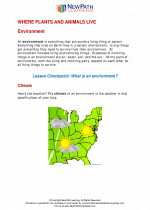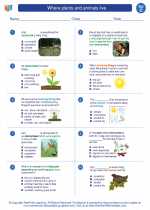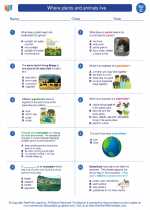Planet
A planet is a celestial body that orbits a star, is spherical in shape, and has cleared its neighboring region of other debris. In our solar system, there are eight recognized planets: Mercury, Venus, Earth, Mars, Jupiter, Saturn, Uranus, and Neptune. These planets vary in size, composition, and distance from the sun.
Characteristics of Planets:
- Orbiting a Star: Planets revolve around a star, such as our sun, following elliptical paths due to gravitational forces.
- Spherical Shape: Planets are rounded due to their own gravity, which pulls their mass into a roughly spherical shape.
- Cleared Orbit: Planets have cleared their orbital path of other debris, distinguishing them from smaller celestial bodies like asteroids and comets.
Study Guide:
Here are some key points to remember about planets:
- What are the characteristics of a planet?
- How many recognized planets are there in our solar system?
- List the names of the eight recognized planets in our solar system.
- Compare and contrast the size and composition of different planets.
- Explain the concept of clearing its neighboring region in relation to a planet's classification.
Understanding the nature and attributes of planets is essential for comprehending our place in the universe and the vast array of celestial bodies that exist beyond Earth.
.◂Science Worksheets and Study Guides Third Grade. Where plants and animals live
Study Guide Where plants and animals live
Where plants and animals live  Worksheet/Answer key
Worksheet/Answer key Where plants and animals live
Where plants and animals live  Worksheet/Answer key
Worksheet/Answer key Where plants and animals live
Where plants and animals live  Worksheet/Answer key
Worksheet/Answer key Where plants and animals live
Where plants and animals live  Vocabulary/Answer key
Vocabulary/Answer key Where plants and animals live
Where plants and animals live  Vocabulary/Answer key
Vocabulary/Answer key Where plants and animals live
Where plants and animals live 

 Worksheet/Answer key
Worksheet/Answer key
 Worksheet/Answer key
Worksheet/Answer key
 Worksheet/Answer key
Worksheet/Answer key
 Vocabulary/Answer key
Vocabulary/Answer key
 Vocabulary/Answer key
Vocabulary/Answer key

The resources above cover the following skills:
LIFE SCIENCE
Unity and Diversity
Construct an argument from evidence to explain the likelihood of an organism’s ability to survive when compared to the resources in a certain habitat (e.g., freshwater organisms survive well, less well, or not at all in saltwater; desert organisms survive well, less well, or not at all in woodlands).
Create models that illustrate how organisms and their habitats make up a system in which the parts depend on each other.